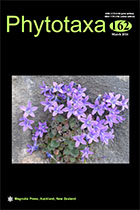Abstract
Xiphion heracleanum was recently described from the Tingitane Peninsula (northern Morocco), on the basis of herbarium material collected mostly in the 19th century. After field work in the Rif area, a new population with three independent subpopulations of X. heracleanum has been discovered in Djebel Bouhachem, over 60 km southeast from Tangiers, the type locality. About 100 reproductive individuals are growing there, on schistose soils in rocky places. New data on morphology, ecology, and distribution of this taxon are reported on the basis of re-evaluation of characters from both living specimens and herbarium material, and morphological affinities and differences with close relatives in the genus are discussed. In particular, relationships with the North African endemic X. junceum are newly revised, a morphologically very close plant which is lectotypified here and as which it has repeatedly been misidentified. Furthermore, inclusion of this species in the list of rare plants of Morocco is proposed as RR, and a key for identification of the known species of Xiphion is presented.

